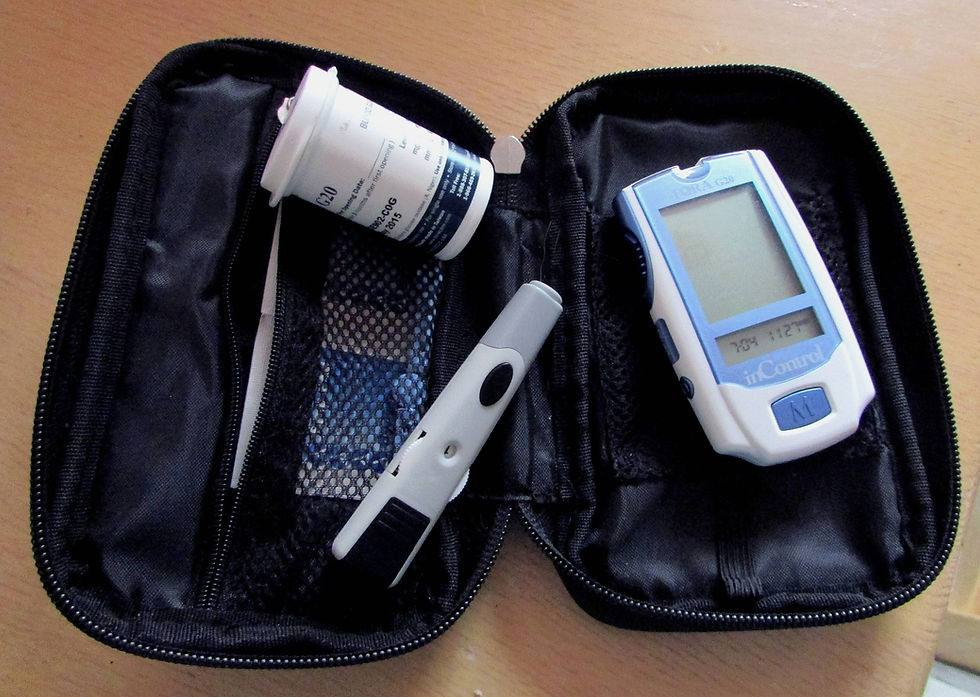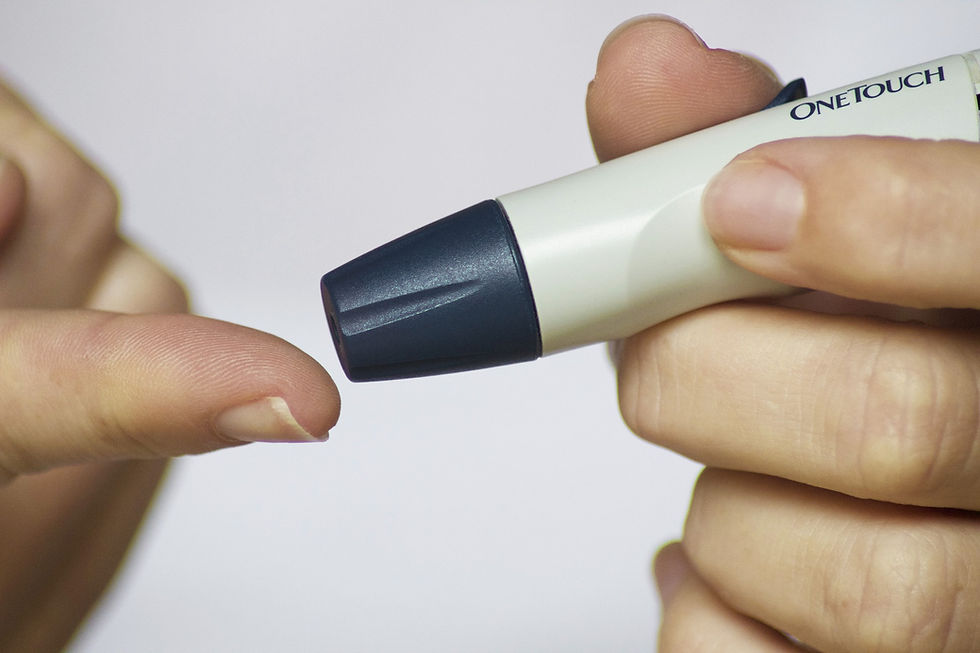Diabetes Will Make You Suffer In Your Life
- 24 ANGELS HOMECARE
- Jan 7, 2021
- 5 min read
Updated: Feb 20, 2024


(source: Malay Mail)
In Malaysia, diabetes prevalence increased from 13.4 per cent to 18.3 per cent in 2015 and 2019, respectively, based on the 2019 National Health and Morbidity Survey. In other words, about one in five Malaysian adults suffer from diabetes. The increasing number of diabetics in Malaysia is among the worrying. In addition, the Health Minister Datuk Seri Dr Adham Baba said that approximately 49 per cent of diabetics in Malaysia is still have not been diagnosed and detected with the disease.
What is diabetes?

Diabetes mellitus, commonly known as diabetes, is a chronic disease that debilitate the function of body to process blood sugar or blood glucose due to high blood sugar levels. Glucose is essential to human’s health because it is the part of energy for the cells to build up our muscles and tissues as well as the main source of energy to the brain. The glucose will be moved by hormone insulin from blood to into the cells for storing or producing energy. Diabetes happens likely because of the insulin does not been produce sufficiently or unable to use the insulin effectively by the body to control the blood sugar level.
Types of diabetes

(source: World Health Organization)
Type 1 diabetes
Type 1 diabetes occurs when the immune system in the body mistakenly attacks and destroys insulin-producing cells in the pancreas, causing the insulin insufficiently to be produced. There is unknown to explain what is the cause and prevention of type 1 diabetes. It could happen on child or teenager, also the family members share genes that make someone more likely to get type 1 diabetes.
Type 2 diabetes
Type 2 diabetes is the common type of diabetes that occurs when the cells of the body is less sensitive or resistant to insulin although the body still produces insulin. The risk of type 2 diabetes increases on the people who are overweight, age 45 or above, have a parent or sibling with the condition, have high blood pressure and abnormal cholesterol and triglyceride levels.
Gestational diabetes
Gestational diabetes is the high blood sugar that happens on women during pregnancy. This type of diabetes is caused by the placenta that produces hormones make their cells less sensitive or resistant to the effect of insulin. It causes the less glucose gets into their cell and remain in their blood. This will increase the risk of type 2 diabetes on them and their children in the future.
Symptoms of diabetes
The common symptoms of diabetes such as:
Extremely hunger
Excessive thirst
Weight loss
Frequent Urination
Fatigue
Slow healing wounds/sores
Blurred version
Irritability
Diabetes diagnosis
If any symptom of diabetes occurs on you, you should conduct a blood testing for diabetes. There are several blood tests used by the doctors to diagnose diabetes:
Haemoglobin A1c test

(source: EndocrineWeb)
Haemoglobin A1c test, also known as the glycated haemoglobin test, is the most ordinary that measures the percentage of glucose has attached itself to red blood cells in the body over the last two to three months. The doctors will draw out a small amount of blood from the patients for this test that does not require fasting.
The results of this test indicate the diabetes condition in below:

The A1c test results might vary or inaccurate on the people who are pregnant or have an uncommon form of haemoglobin. In these situations, the doctor will suggest other diabetes tests for them.
2. Fasting blood sugar test

(source: healthing.ca)
Before the fasting blood glucose test, the patients cannot eat or drink anything except water for 8 to 12 hours and will be drawn the blood after they have fasted overnight for 8 hours. Then, glucose meter will be used to conduct the test.

The results show the condition of diabetes in below:

3. Random blood sugar test

For the random blood sugar test, the patients will be drawn the blood at any a random time. It doesn’t matter the time you eat and drink before the test. If the glucose meter show 200 mg/dL of blood sugar level, it indicates that you might have diabetes.
4. Oral glucose tolerance test (OGTT)

(source: Medline Plus)
For oral glucose tolerance test, the patients must be in good health, normally active, should not take any medicines before the test, fast overnight for more than 8 hours but not more than 16 hours, and cannot eat or drink anything for 8 hours before the test. Firstly, you require to do a fasting blood sugar test. After that, the patients will be given a sugary liquid for drinking. After two hours, you will be tested the blood sugar levels again.
The result of this test in below:

Complications:

(source: Edelweiss publications)
Diabetes may impact our daily life if it is not treated in time. The high blood sugar could destroy organs and tissues throughout the body. There are several complications of diabetes:
Heart disease
Nerve damage
Kidney disease
Stroke
Dementia
Foot damage, leading to sores that slow heal
Retinopathy
Dental and gum disease
Diabetes treatment
Different types of diabetes have its own medications to treat diabetes.
Type 1 diabetes:
The patient with type 1 diabetes requires to inject insulin to replace the hormone their body unable to produce. There are different types of insulin for them to treat diabetes.

(source: Diabetes.co.uk)

Type 2 diabetes:
The patient with type 2 diabetes can manage their blood sugar level through diet and exercise. They can also inject insulin or take medication with various types of drug in below:

(source: healthline)
Prevention
Unfortunately, type 1 diabetes cannot be prevented but for type 2 diabetes. Before you are diagnosed a type 2 diabetes, you should take action and plan to prevent from diabetes. As a saying goes, prevention is better than cure. It is not too late start it! Ways to prevent from diabetes include:
1. Do exercise regularly

You can engage in at least 150 minutes per week of aerobic exercise, including swimming, walking, or cycling. It helps to lower your blood sugar levels because your muscle will use more the glucose or sugar in your bloodstream. As a result, it can help you to lose weight which is the risk of factors for diabetes.
2. Maintain a balanced diet

You should cut sugar and refined carbs from your diet such as soft drink, white rice, or white bread to reduce ingesting too much glucose that may increase the risk of diabetes. You are advised to eat nutritious foods such as vegetables, fruits, whole grains, lean proteins, and healthy fat sources. Remember, you are what you eat!
3. Avoid from unhealthy habits

Unhealthy habits such as smoking, drinking and inconsistent sleeping may increase the risk of diabetes. It’s time for you to break up with these bad habits. Based on the several studies, smoking was found to increase the risk of diabetes by 44 percent in average smokers.




Comments